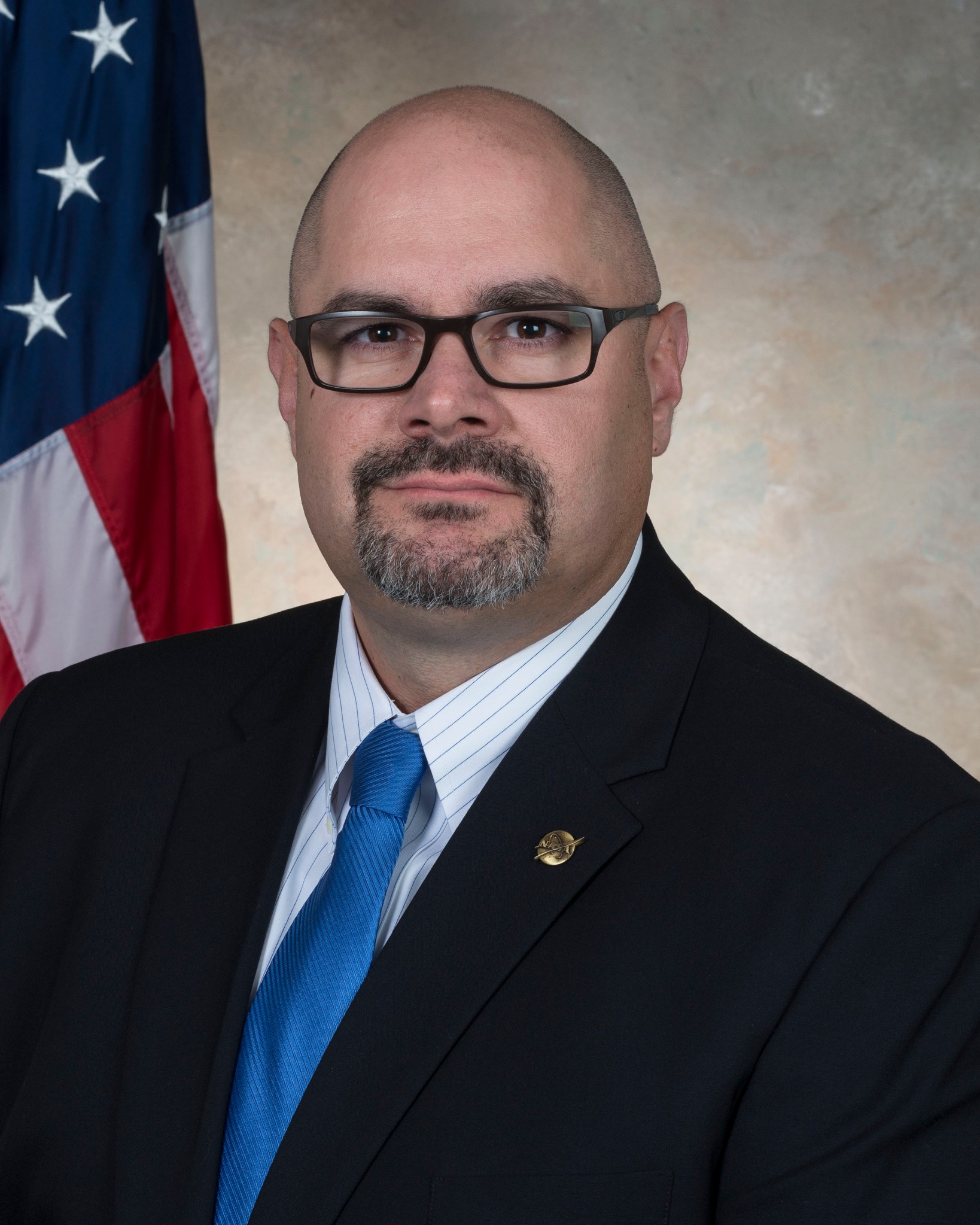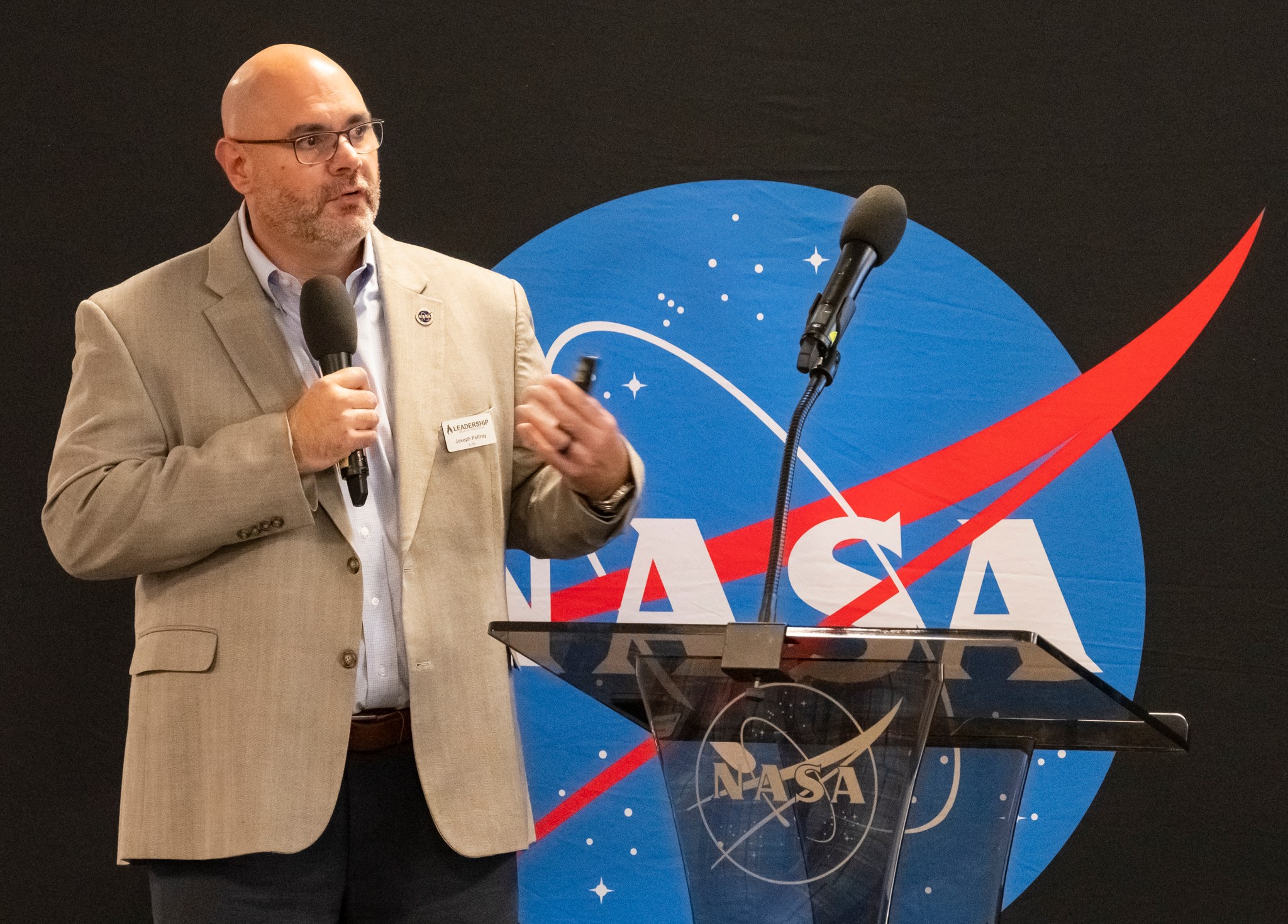For Joseph Pelfrey, growing up in Cheraw, South Carolina, was idyllic. Most of his family lived in or near the town of less than 6,000, so large gatherings were common. He also enjoyed outdoor activities and spending time with friends.
“In a community where most everyone knows you, it was easy to have lots of people in your corner,” said Pelfrey, who in April was named deputy director of NASA’s Marshall Space Flight Center in Huntsville, Alabama. “As I grew older, I found I wanted more than my small town could offer, which led to the next steps in my journey.”
One of those people in Pelfrey’s corner was a high school math teacher, Gladys Sweeney. She ensured that Pelfrey was accountable for his educational development and recognized that he was capable of more. She and his parents helped him apply to the South Carolina Governor’s School for Science and Math in Hartsville, a two-year residential high school focused on advanced science, technology, engineering, and math education for the top 1% of students in the state.
“I left home at 16 and finished my high school years forming a great foundation that would take me to Auburn University to major in aerospace engineering,” Pelfrey said. “The governor’s school was also the place I met my future wife, Nicole.”
Pelfrey joined Marshall as a civil servant in 2004, following several roles in industry and he went on to hold multiple leadership positions in engineering and project offices. Those roles helped prepare him for the challenge of being Marshall’s deputy director, a job in which he assists in leading the center’s nearly 7,000 civil service and contractor employees while overseeing an annual budget of approximately $4 billion
“Our team is incredible,” Pelfrey said. “In all my roles, I’ve been surrounded with great teammates who demonstrate a level of innovation and commitment beyond expectations. NASA’s mission affords us an opportunity to do some incredibly challenging things and it’s been fun to watch our teams, both government and industry, advance our exploration goals.
“I’ve also had the opportunity to grow, developing my own leadership style and continuously looking for ways to improve. Through these opportunities, I have developed a leadership philosophy rooted in five attributes: shared accountability, challenge the status quo, stay curious, practice transparency, and be mission focused.”
Pelfrey also helps guide Marshall’s portfolio of human spaceflight, science, and technology development efforts. He had the opportunity to contribute to all three areas in his previous role as manager of Marshall’s Human Exploration Development & Operations Office. The office oversees Marshall’s work in human exploration and transportation projects; habitation systems; payload and mission operations and integration; and International Space Station payload, facility, and environmental control and life support systems.
“NASA’s work in low-earth orbit has spurred a growing space enterprise and a desire to explore even further,” Pelfrey said. “There are still many frontiers to pursue and it’s exciting to think of all the incredible things waiting to be discovered.”
When it comes time to “unplug” and step away from work, Pelfrey makes family time a priority. That includes camping, swimming, Auburn football weekends, and cruises. He also serves in his church and enjoys helping others. His personal time is usually spent on projects around the house, hunting, or working on his project car – a 1958 Austin Healey Sprite.
Obstacles are part of the territory when it comes to science and space exploration. Pelfrey acknowledges that hurdles lie ahead, but he remains undaunted in his quest to help Marshall and NASA achieve their missions throughout the cosmos.
“Marshall is adapting and will need to continue adapting to new operating models to solve challenges of the future,” he said. “We will need to focus our pursuits to capture new ideas, missions, and partnership opportunities.”
“We have many great things to look forward to, delivering on current commitments and formulating new opportunities to expand our portfolio. Marshall will meet its strategic goals while serving a key role in meeting those of the agency.”
For more information about NASA’s Marshall Space Flight Center, visit:
-end-
Shannon Segovia
NASA’s Marshall Space Flight Center, Huntsville, Alabama
256-544-0034
shannon.segovia@nasa.gov































